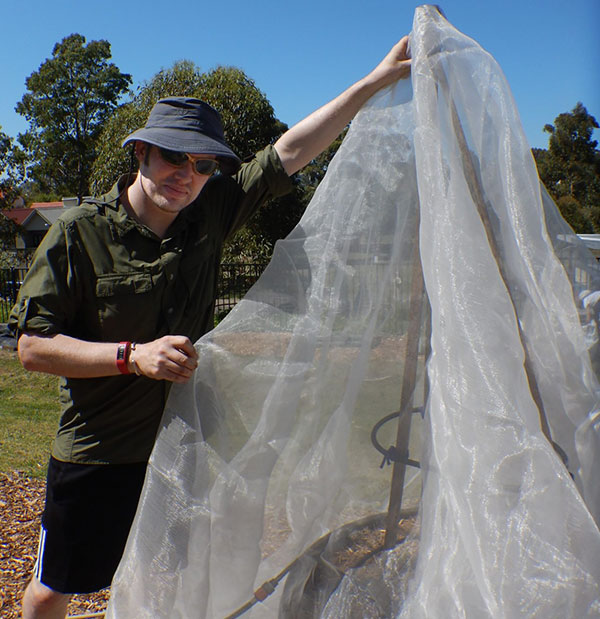
Signs of infestation
Young caterpillars feed on the foliage first before moving into flower buds or developing fruits.
What is happening and why?
Budworms are caterpillars of the Helicoverpa moth family. The moths lay their eggs at night on young foliage close to fruits or flower buds and the young caterpillars feed on the foliage first before moving into buds or developing fruits.
After several weeks of feeding, the caterpillars burrow into the topsoil beneath the plant and pupate until rain that produces a burst of new plant growth will signal an opportune time for adult moths to emerge from pupa cases and lay eggs.
What to do?
- Avoid dry stress. Although rain stimulates egg laying, this moth only lays eggs on plants that have had a period of dry stress. Plants can only absorb the elements they need for pest-resistance from damp soil, and water stress provides the conditions that make them susceptible to attack. Water regularly and deeply using the irrigation systems. Keep beds mulched.
- After rain, give plants a drink of organic seaweed extract tea to assist in building disease-resistance. Use seasol mixed with water in a watering can so it looks like a thin tea. Apply directly to were the plants come out of the ground. Use about half a watering can per bed. Make a note in the garden logbook, so other people know what has been done.
- A fine mesh netting keeps new moths from reaching the plants.
- Remove all caterpillars, distorted leaves, affected flowers and fruit and bin to waste.
- Netting plants after the first moth attack doesn’t protect them from the pupating moths already in the ground and eggs and caterpillars on the plant inside the netting.
- The caterpillar is sensitive to a bacterial disease that can be caused by spraying them with dipel. The bacteria applied by the use of dipel do no harm to humans and most other insects.A constant and rigorous application is necessary, once per week and after every major rain. Mix ½ a pack of dipel and a splash of dishwashing liquid to 5 litres of water in the big spray can. Spray the whole plant, both sides of the leaves, early in the morning, so that it can dry up. One 5 litre spray can works for 6 beds. Make a note in the garden logbook, so other people know what has been done.
Once the population of moths and caterpillars under the tents are controlled, and new moths can’t reach the plants anymore, spraying will be less necessary.